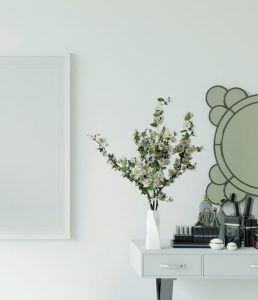Do you love plants but don’t have enough sunlight in your home? Don’t worry! Low-light plants are the perfect solution for you. Whether you live in an apartment with small windows or a house with shaded corners, you can still enjoy the beauty and benefits of greenery indoors.
In this blog, I’ll help you figure out the best places to put low-light plants so they can thrive. I’ll also share some easy care tips to keep them happy and healthy. Let’s dive in!
What Are Low-Light Plants?
Before we start placing our plants, let’s understand what low-light plants actually are. Low-light plants are those that can survive and grow in areas with little natural sunlight. This means they don’t need direct sunlight like outdoor plants do. Instead, they can thrive in indirect light, artificial light, or even dim spaces.
Some popular low-light plants include:
- Snake Plant – A tough plant that purifies the air.
- ZZ Plant – Almost indestructible and great for beginners.
- Pothos – A trailing plant that grows even in low light.
- Peace Lily – A beautiful plant with white flowers that thrives in shade.
- Cast Iron Plant – Known for surviving in the darkest corners.
Now that we know which plants to pick, let’s talk about the best places to put them in your home!
Best Places to Put Low-Light Plants in Your Home
1. Corners with Indirect Light
Do you have an empty corner in your home that looks dull? Adding a low-light plant can instantly bring life to that space! Some plants, like the Cast Iron Plant or Snake Plant, are perfect for shaded corners. They don’t need much sunlight but still add a touch of nature to your home.
Tip: Place a tall indoor plant in a decorative pot to create a cozy and stylish vibe in any corner.
2. Bedrooms and Nightstands
Wouldn’t it be nice to wake up to a bit of greenery? Adding low-light plants to your bedroom is a great idea. Not only do they improve air quality, but they also create a peaceful and relaxing atmosphere.
Best plants for bedrooms:
- Snake Plant – Releases oxygen at night, helping you sleep better.
- Peace Lily – Removes toxins from the air and adds elegance to your space.
- ZZ Plant – Doesn’t need much attention, perfect for busy people.
Tip: Place a small potted plant on your nightstand or dresser for a fresh and calming touch.
3. Bathrooms with Minimal Sunlight
Yes, you can put plants in your bathroom! Some plants actually love the humidity from showers and baths. Even if your bathroom doesn’t get much sunlight, low-light plants like ferns or bamboo can still thrive.
Best plants for bathrooms:
- Ferns – Love humidity and can survive in low light.
- Spider Plant – Absorbs moisture and purifies the air.
- Lucky Bamboo – Grows well in water and needs very little light.
Tip: Place a small plant on your bathroom counter or hang a pot near the shower for a spa-like feel.
4. Office Desks & Workspaces
Did you know that having plants in your workspace can boost productivity and reduce stress? If you work from home or spend a lot of time at your desk, adding a low-light plant is a great way to stay fresh and focused.
Best plants for offices:
- ZZ Plant – Doesn’t need much care and survives in artificial light.
- Pothos – A fast-growing vine that looks great on shelves.
- Philodendron- A hardy plant that thrives in low light.
Tip: Place a small potted plant next to your computer or on a shelf to brighten up your workspace.
5. Hallways & Entryways
Hallways and entryways often don’t get much sunlight, making them perfect for low-light plants. Placing plants in these areas can make your home feel more inviting.
Best plants for hallways:
- Cast Iron Plant – Tough and perfect for dark areas.
- Chinese Evergreen – A beautiful plant that adds a pop of color.
- Dracaena – Can survive with very little sunlight.
Tip: Use decorative pots or plant stands to create a stylish, welcoming entrance.
6. Shelves & Hanging Planters
If you don’t have much floor space, you can still add plants to your home by using shelves and hanging planters. Hanging plants create a beautiful cascading effect, while shelf plants add charm to any room.
Best hanging and shelf plants:
- Pothos – Trails down beautifully from shelves.
- Heartleaf Philodendron – Low-maintenance and looks stunning.
- Boston Fern – Adds texture and thrives in low light.
Tip: Use wall-mounted planters or macramé hangers to add greenery without taking up space.
How to Keep Low-Light Plants Healthy
Now that you know where to place your plants, let’s talk about how to care for them. Even though low-light plants are easy to maintain, they still need some attention.
Here are some simple care tips:
Water – Don’t overwater! Most low-light plants only need watering once a week or when the soil feels dry.
Choose the right pot – Make sure your plant pot has drainage holes to prevent root rot.
Wipe the leaves – Dust can collect on plant leaves, blocking light. Wipe them occasionally with a damp cloth.
Rotate your plants – If possible, rotate your plants every few weeks so all sides get some light.
Use artificial light – If your space is too dark, use LED grow lights to keep your plants happy.
Low-light plants are a fantastic way to bring greenery into your home, even if you don’t have much sunlight. Whether you place them in corners, bedrooms, bathrooms, or offices, these plants will not only enhance your space but also improve air quality and boost your mood.
So, why not start adding some green beauty to your home today? Pick a few low-light plants and experiment with different placements to see what works best for you. Happy planting!


